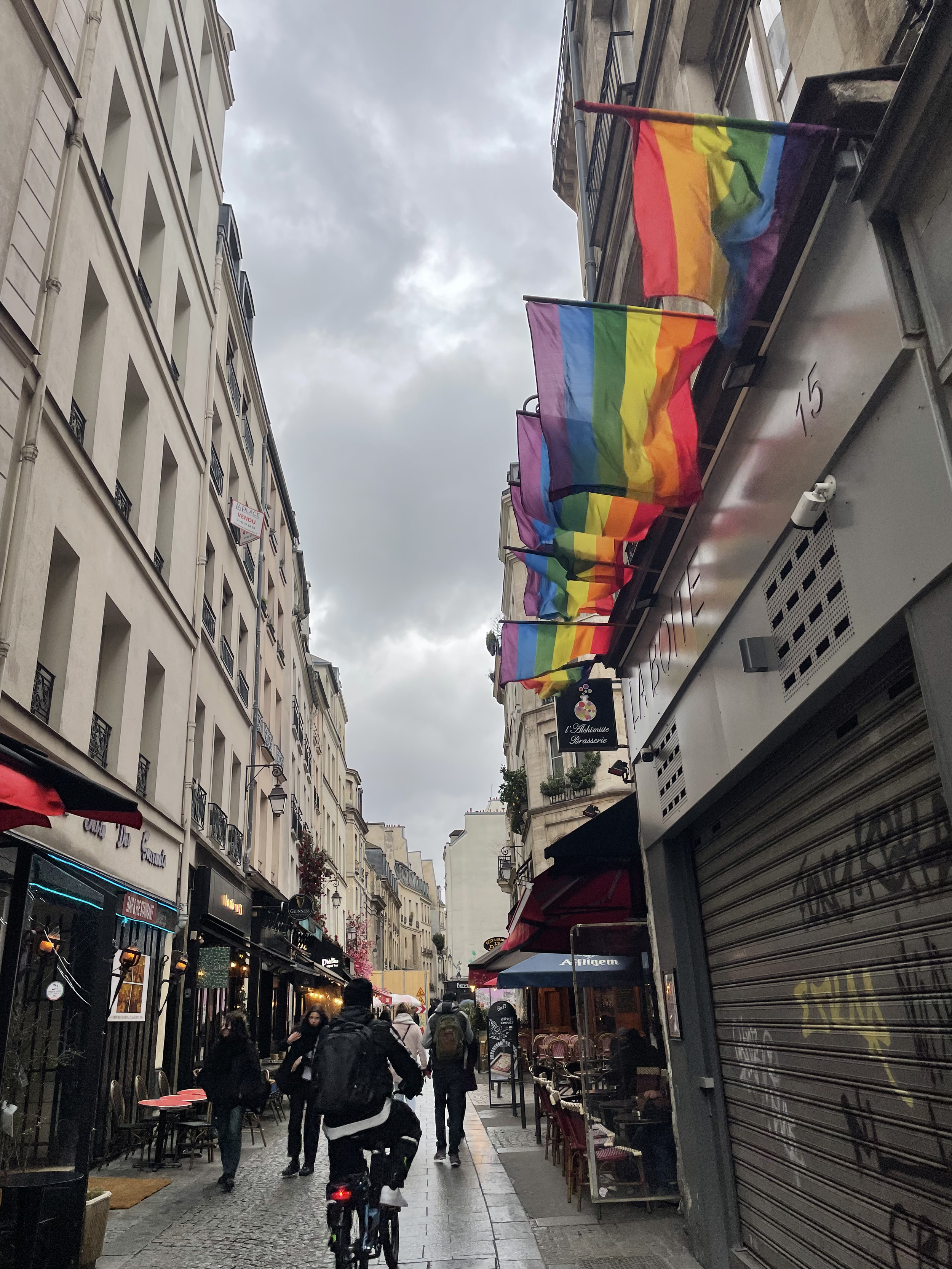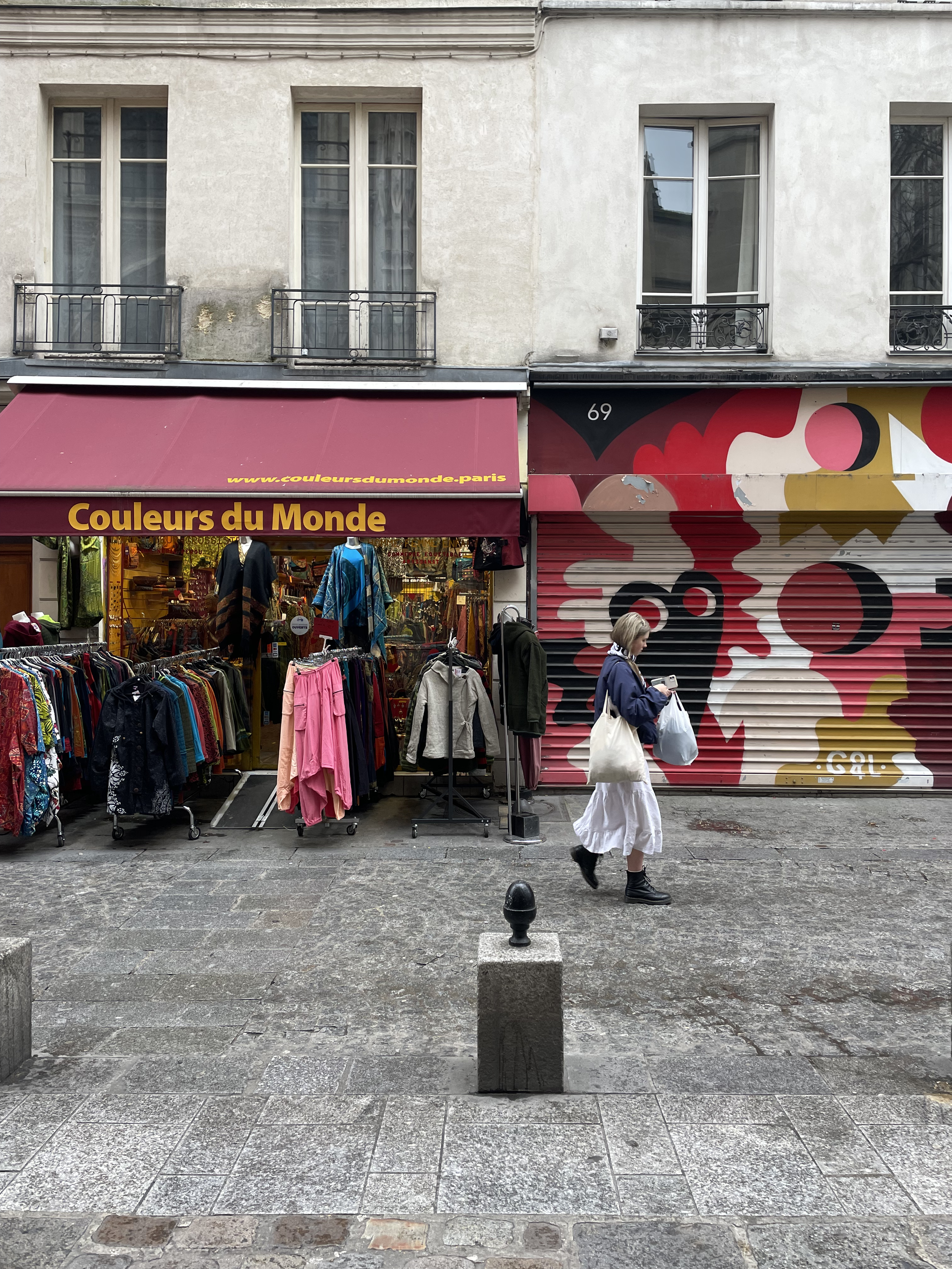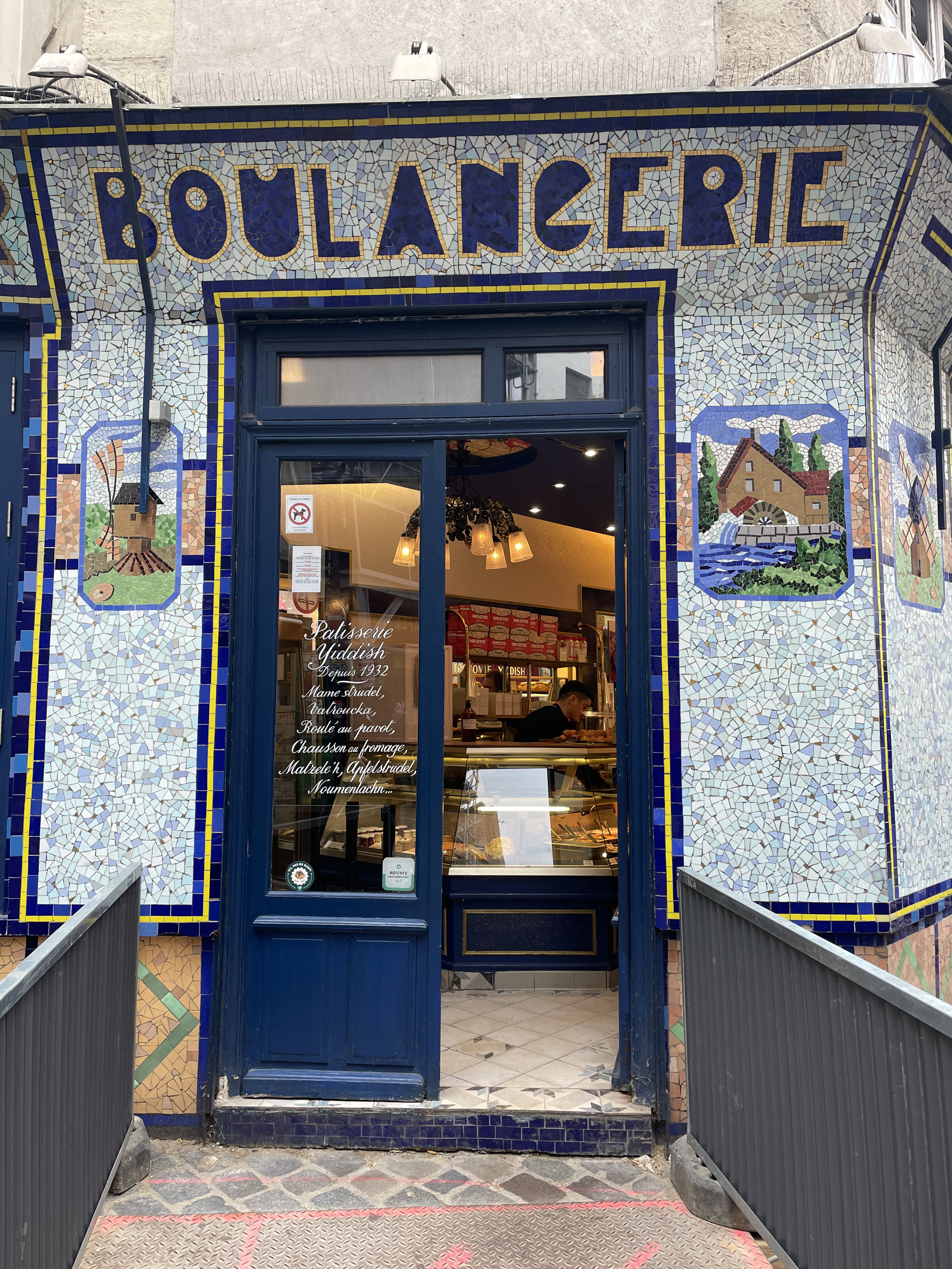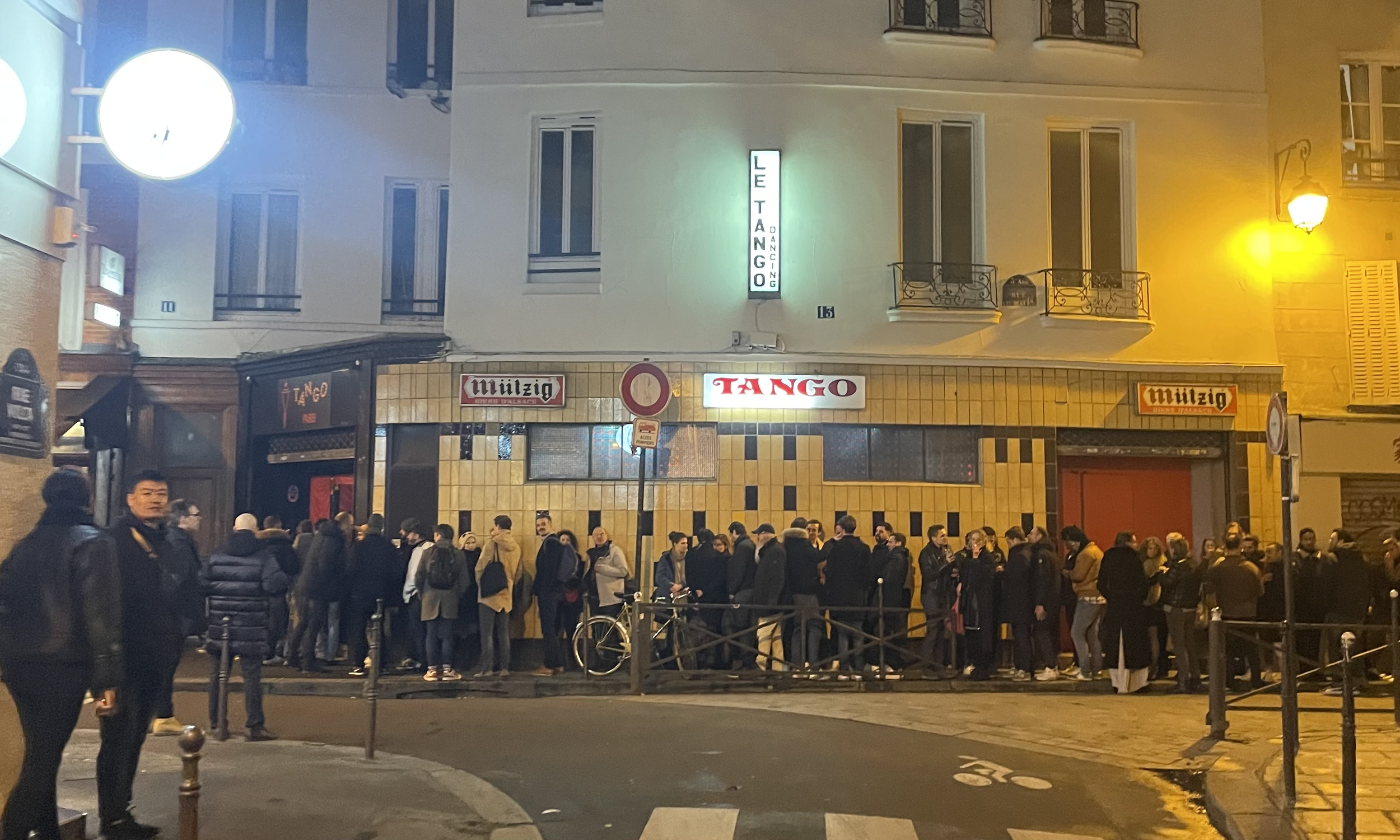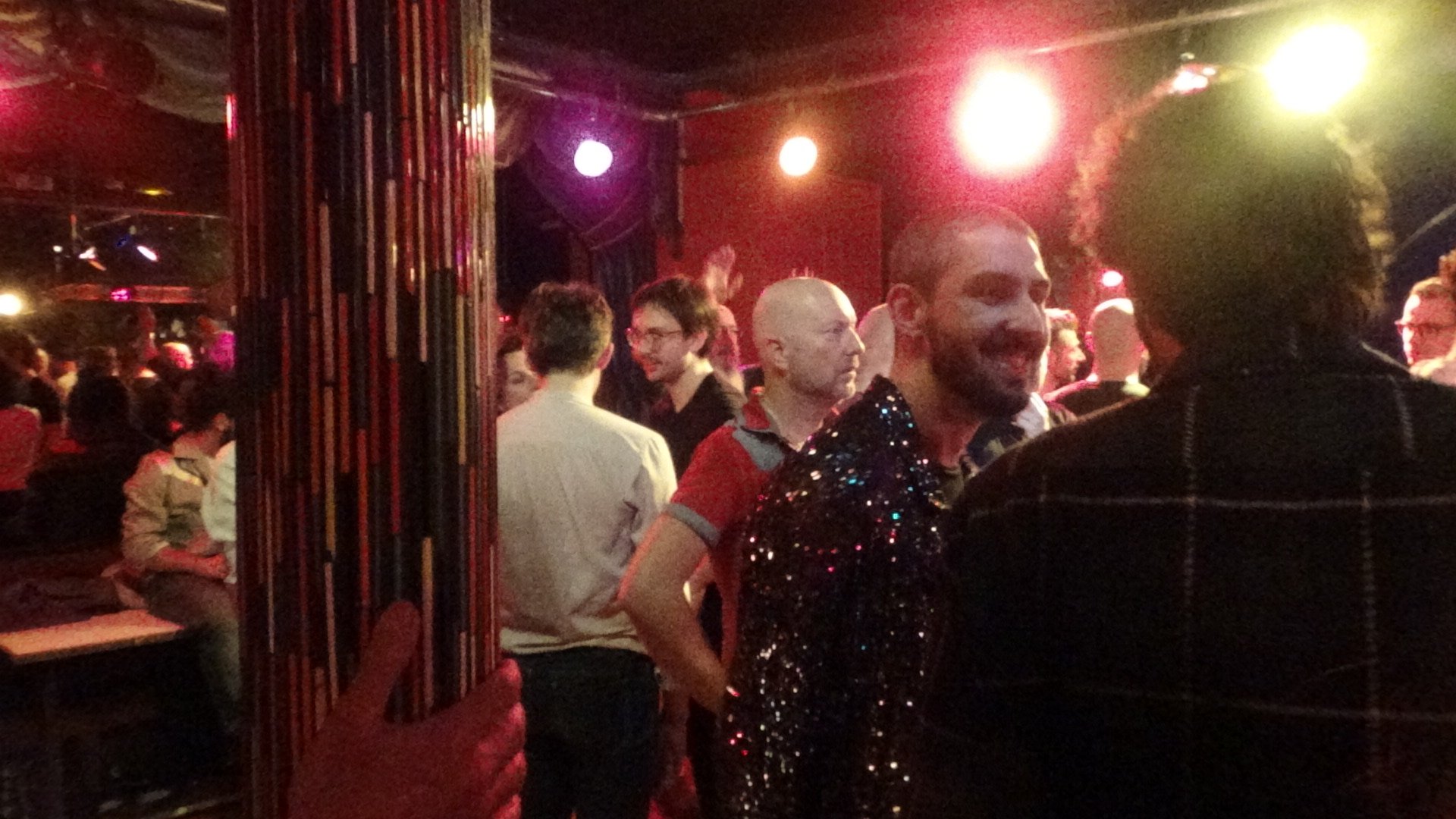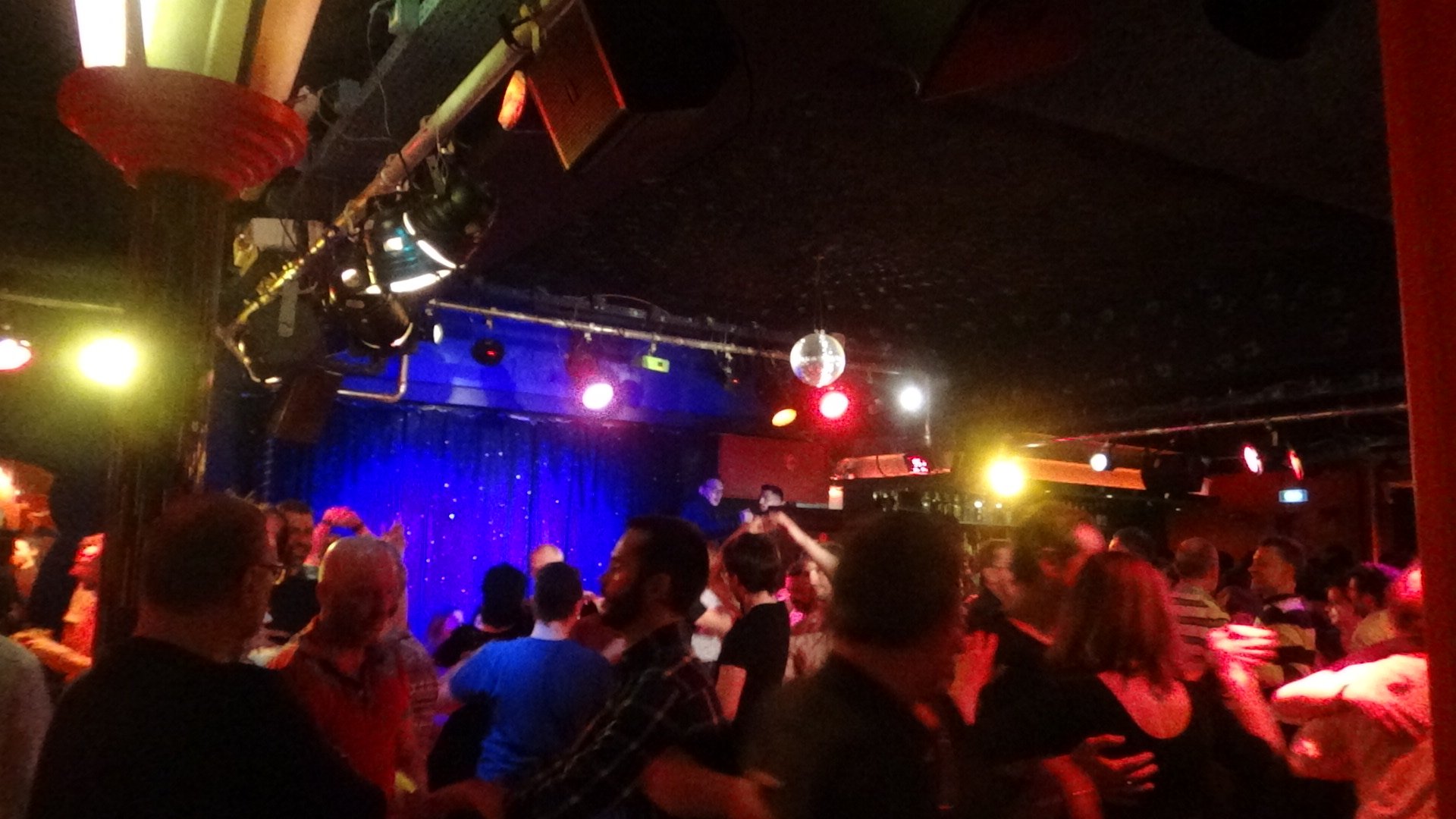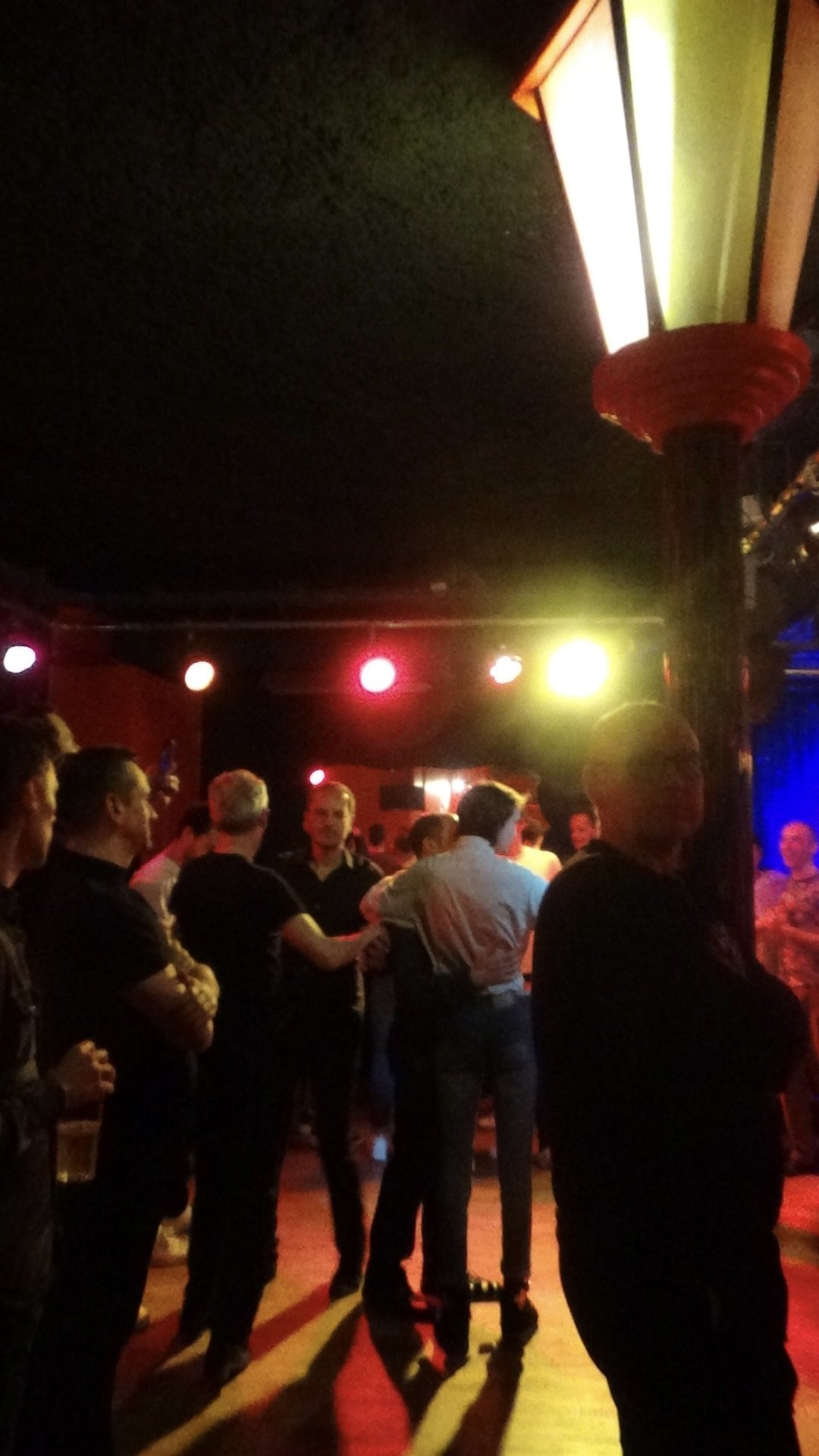La Marais: Breakfast at the Yiddish boulangerie, thrifting, a gay nightclub, and a shower strip-tease
The Marais has much more to it and reveals itself as accommodating to a reformulated idea of Paris’ inhabitants.
Image Credit: Grace Street
Sundays are a sacred day in the Marais. As one of Paris’ car-free zones one day per week, it is a pedestrian paradise where Parisians and tourists alike flock to the area covering parts of the city’s 3rd and 4th arrondissements. When you envision said Parisians, the mind tends to conjure up images of well-dressed, white, cigarette-adorned men and women wearing neutral tones and uninterested expressions. The idea of the stereotypical Parisienne woman — slender, sophisticated, smoking — has certainly dictated fashion and diets of the 20th and 21st centuries, acting as a standard for what is à la mode, even with its supposedly timeless and effortless character.
Such a mould of a Parisian may fit into certain parts of the Marais — perhaps in the Place des Vosges, a picturesque 15th century square created by Henri IV and later home to Victor Hugo, or in the countless fashion boutiques lining the streets. However, the Marais has much more to it and reveals itself as accommodating to a reformulated idea of Paris’ inhabitants. It exhibits a careful mélange of Paris’ diversity across time, being renowned for the city’s largest Jewish quarter, a large South-East Asian community, and a strong LGBTQIA+ culture. Although undergoing processes of gentrification, the Marais offers a vision of the modern Paris — pedestrianised, diverse, filled with eclectic street art — whilst paying homage to its origins and ugly truths in the city’s history.
Rue des Rosiers
The Jewish quarter in the Marais is named Pletzl, meaning ‘small square’, and has been home to a large Jewish community for centuries. On Rue des Rosiers, you will find a French street plaque in Yiddish reading ‘Pletzl’, installed by artist Sebestyén Fiumei. Rue des Rosiers is a time capsule, telling the stories of the area’s Jewish community.
A short trip back into European history reveals the grotesque stories of ‘la rafle’ (‘the roundup’) of Jewish people in France after Nazi invasion. Organised with the agreement of the French police, Jewish people living in Paris were betrayed and attacked by the state and their neighbours on July 16 and 17, 1942. One particular roundup took place in the Jewish school on Rue des Rosiers, where teachers and 165 students were taken off to concentration camps. France’s responsibility and role in the Holocaust were not recognised until 1995 by president Jacques Chirac, and this part of French history is often ignored.
The Marais offers proof of the Jewish community’s endurance and a pledge to not forget their mistreatment, with the Museum of the Art and History of Judaism, Anne-Frank Garden, and Shoah Memorial. A plaque honouring its lost children remains on the wall of the former-Jewish primary school, now surrounded by fashion brands of the likes of Adidas and COS. As the inevitable processes of gentrification and hyper-tourism come out to play, and rental prices increase in the Marais, some Jewish people are relocating to other Paris arrondissements. Nonetheless, recently when visiting I stumbled upon what seemed to be a convention of American Orthodox Jews outside the synagogue and Yiddish boulangerie, congregating and speaking to passersby.
Place Igor-Stravinsky
Mixing with this strong cultural history, the contemporary elements of the Marais form a more-rounded idea of what it is to be a Parisian through art, Asian restaurants, and gay bars. Place Igor-Stravinsky square, named after the celebrity Russian composer and musician of the 20th century, boasts grand contemporary murals painted by renowned street artists. The first is ‘Chuuuttt !!!’ (‘Shuuushh’) by Jef Aérosol, painted in 2011. A wide pair of eyes stare down, daring the people down below to stay silent whilst looking around and taking in their surroundings. Next door, Shepard Fairey’s ‘The Future is Unwritten’ features striking blues, ornate patterns, and messages, similarly provoking a meditation on the Marais as a reflection of Paris’ present and potential future.
Rue de la Verrerie
Sitting behind and running parallel to Rue de Rivoli, one of Paris’ famous commercial streets lined with fashion brands, is Rue de la Verrerie and its own array of vintage and second-hand clothing stores. In a small stretch there are multiple kilo shops, including a Kawaii-themed store. The ‘timelessness’ associated with French fashion lives on here in the spirit of sustainable and durable items and trends. My favourite kilo shop is filled with thousands of items, with walls boasting statistics about the water consumption in clothing production, an ‘OLD IS THE NEW GOLD’ mural, and a calling for an end to wastage.
Further down Rue de la Verrerie, one comes to a magical crossroads at the intersection with Rue des Archives. Like other sections of the quarter, rainbow-coloured lines painted on the road outline the four pedestrian crossings. Implemented in 2018 for Paris’ annual Gay Pride March, it was decided that the rainbow paint would become permanent after it was graffitied over with homophobic insults. Five years later, it remains a testament to the progressive nature of the Marais and the evolving characteristic of Parisians.
Rue au Maire
The historic gay club, Le Tango, still stands on Rue au Maire, thanks to the mayor of Paris who acquired the building in 2021 after it faced being sold-off. An iconic club with a significant Black and Latino clientele in the 80s which evolved into a popular discothèque after being taken over by teacher and gay activist Hervé Latapie in 1995, it closed its doors in 2020 due to COVID-19 and a lack of public funding. This potential sale signified another blow to the loss of gay culture in the Marais, expected to be replaced by a tourist spot.
Friday 10 March was the night for the opening of ‘Tango 3.0’. Upon arrival at the venue, we gasped at the length of the queue lining the Rue au Maire. Our hopes of entry were dashed slightly when we were told by the owner — as we later found out — that we were unlikely to get in as a group of young people conversing in English, as the line was otherwise filled with long-time customers, some of 20 years or more.
The uniqueness of Le Tango was made evident as we entered, the crowd encircling a dance floor and disco ball, creating a cabaret feel. Partners — primarily middle-aged men (non-derogatory) — were spinning around to ballroom music. As the clock struck midnight, Hervé Latapie, the president of Le Tango spoke to welcome everyone back, acknowledging the arrival of some new, younger guests amongst their long standing community. The announcement of the end of the ballroom dancing was met with sighs, but applause soon followed as a line dance was declared — “Le Madison!” A novelty dance from the mid-20th century, people of all ages began a Macarena-like box-step line dance. As the disco music then took over, we boogied while remarking the joyous reunions of friends and lovers around us — embracing, kissing, jiving.
Still feeling out of place and as if we were intruding on something not meant for our young and foreign eyes, we left as the queue outside remained stretching into the night. We ended up at Le Raidd — a more burlesque gay nightclub with shirtless waiters and shower stripteases by bodybuilders in a glass cage. Amongst other young people and an electric atmosphere, we felt more at home. However, it lacked the classic and close-knit feel of Le Tango.
Whilst attempting partner dancing and soaking up the ballroom and disco music was refreshing for us, it felt like Le Tango should remain something intimate and untouched — a safe haven and community spot, rather than a destination on the map. It was a glimpse into a past, or a forgone present, that could have remained more secure and prevalent if not for COVID, gentrification, and reduced public funding. Perhaps it could lead to the emergence of new, similar spaces with old-school music and dancing but for younger crowds, but Le Tango is best in its original form with its original crowd. It is certainly a model to admire and replicate, with its magic and amour between lovers and friends, and a quintessential representation of the legend of the Marais.


